Discover 20 hidden attractions, cool sights, and unusual things to do in Santiago de Compostela (Spain). Don't miss out on these must-see attractions: Camino de Santiago, Santiago de Compostela Cathedral, and Pazo de Raxoi. Also, be sure to include Monasterio de San Martin Pinario in your itinerary.
Below, you can find the list of the most amazing places you should visit in Santiago de Compostela (Galicia).
Table of Contents
Camino de Santiago

Route. The Camino de Santiago, known in English as the Way of St James, is a network of pilgrims' ways or pilgrimages leading to the shrine of the apostle Saint James the Great in the cathedral of Santiago de Compostela in Galicia in northwestern Spain, where tradition holds that the remains of the apostle are buried.
As Pope Benedict XVI said, "It is a way sown with so many demonstrations of fervour, repentance, hospitality, art and culture which speak to us eloquently of the spiritual roots of the Old Continent." Many follow its routes as a form of spiritual path or retreat for their spiritual growth. It is also popular with hiking and cycling enthusiasts and organized tour groups.
Created and established after the discovery of the relics of James of Zebedee at the beginning of the 9th century, the Way of St James became a major pilgrimage route of medieval Christianity from the 10th century onwards. But it was only after the capture of Granada in 1492, under the reign of Ferdinand II of Aragon and Isabella I of Castile, that Pope Alexander VI officially declared the Camino de Santiago to be one of the "three great pilgrimages of Christendom", along with Jerusalem and Rome.
In 1987, the Camino de Santiago, which encompasses several routes in Spain, France and Portugal, was declared the first Cultural Route of the Council of Europe. Since 2013, the Camino de Santiago has attracted more than 200,000 pilgrims each year, with an annual growth rate of more than 10 percent. Pilgrims come mainly on foot and often from nearby cities, requiring several days of walking to reach Santiago. The French Way gathers two-thirds of the walkers, but other minor routes are experiencing a growth in popularity. The French Way and the routes in Spain were inscribed on the UNESCO World Heritage List, followed by the routes in France in 1998, because of their historical significance for Christianity as a major pilgrimage route and their testimony to the exchange of ideas and cultures across the routes.[1]
Santiago de Compostela Cathedral

Also known as: Catedral de Santiago de Compostela
Landmark 11th-century cathedral. The Santiago de Compostela Archcathedral Basilica is part of the Metropolitan Archdiocese of Santiago de Compostela and is an integral component of the Santiago de Compostela World Heritage Site in Galicia, Spain. The cathedral is the reputed burial place of Saint James the Great, one of the apostles of Jesus Christ. It is also among the remaining churches in the world built over the tomb of an apostle, the other ones being St Peter's Basilica in Vatican City, St Thomas Cathedral Basilica, Chennai in India and Basilica of St. John in Izmir, Turkey.
The archcathedral basilica has historically been a place of pilgrimage on the Way of St James since the Early Middle Ages and marks the traditional end of the pilgrimage route. The building is a Romanesque structure, with later Gothic and Baroque additions.[2]
Address: Praza do Obradoiro, s/n, 15704 Santiago de Compostela
Pazo de Raxoi

Also known as: Palacio de Rajoy
18th-century, French neoclassical palace. Pazo de Raxoi is a neoclassical palace in Santiago de Compostela, Galicia, Spain. Completed in 1766, it is located on the Praza do Obradoiro, in front of the cathedral.
It is the seat of the city council and regional government.[3]
Monasterio de San Martin Pinario
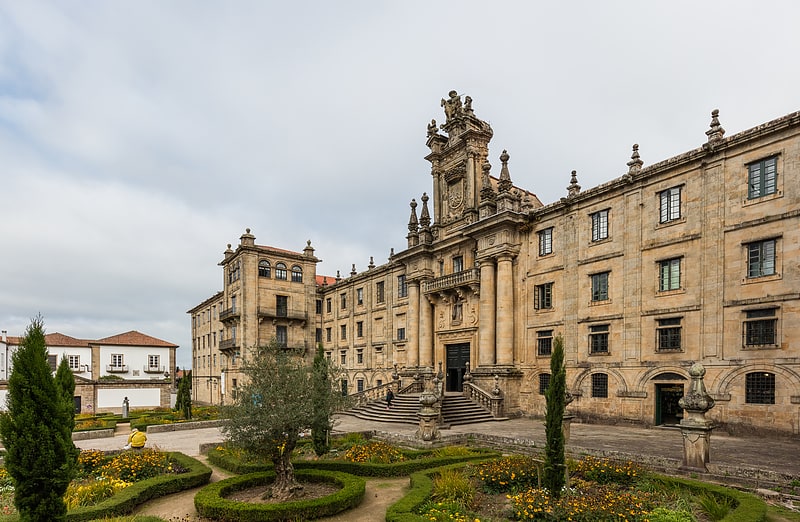
Also known as: Monasterio de San Martín Pinario
Monastery in Santiago, Spain. The monastery of San Martiño Pinario was a Benedictine monastery in the city of Santiago de Compostela, Galicia, Spain. It is the second largest monastery in Spain after San Lorenzo de El Escorial.
Little remains of the original medieval buildings, as the monastery has been largely rebuilt since the sixteenth century. The monastery was closed in the nineteenth century in the Ecclesiastical Confiscations of Mendizábal. The buildings currently house a seminary.[4]
Address: Praza San Martino S/n, 15704 Santiago de Compostela
Cidade da Cultura

Also known as: Ciudad de la Cultura de Galicia
Cultural center in Spain. The City of Culture of Galicia is a complex of cultural buildings in Santiago de Compostela, Province of A Coruña, Galicia, Spain, designed by a group of architects led by Peter Eisenman. Construction was challenging and expensive as the design of the buildings involves high degree contours, meant to make the buildings look like rolling hills. Nearly every window of the thousands that are part of the external façade has its own custom shape. In 2013 it was announced that after more than a decade, construction of the project would be halted. The International Art Center and Music and Scenic Arts Center will not be built.
In February 1999 the Parliament of Galicia held an international design competition for a cultural center on Mount Gaiás. The entrants were Ricardo Bofill, Manuel Gallego Jorreto, Annette Gigon and Mike Guyer, Steven Holl, Rem Koolhaas, Daniel Libeskind, Juan Navarro Baldeweg, Jean Nouvel, Dominique Perrault, Cesar Portela, Santiago Calatrava, who later withdrew his proposal, and Eisenman, whose proposal was selected for both conceptual uniqueness and exceptional harmony with the place.
The concept of the project is a new peak on Monte Gaiás, made up of a stony crust reminiscent of an archaeological site divided by natural breaks that resemble scallops, the traditional symbol of Compostela.
The building site has also become the base for the development of a public transparency urban experiment by the Spanish architect and artist Andrés Jaque. With Jaque's 12 Actions to Make the Cidade da Cultura Transparent, the building site was equipped with devices that make the political implications and ecological extension of the construction works understandable for the general public.
The project has more than doubled its original budget and has not attracted significant numbers of visitors (becoming a white elephant for subsequent governments and taxpayers). Construction of the final two planned buildings was stopped in 2012 and terminated definitively in March 2013 following high cost overruns.[5]
Address: Monte Gaiás, 15704 Santiago de Compostela
Monte do Gozo
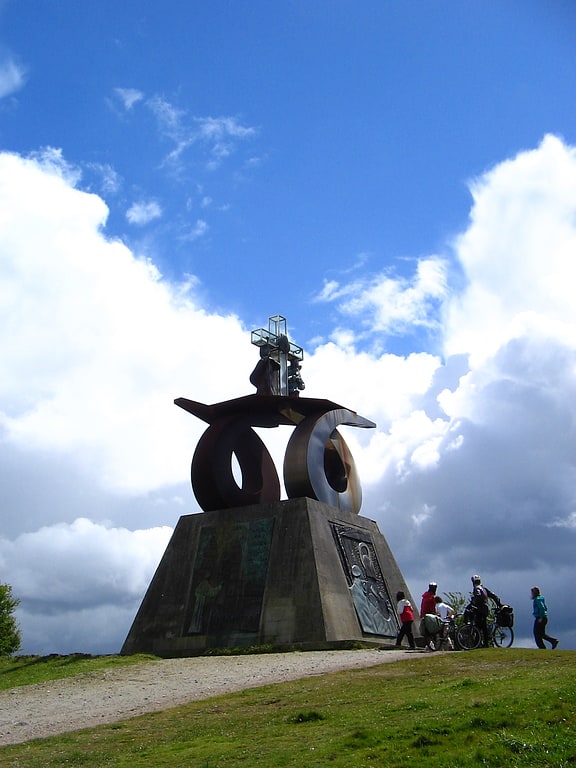
Hill in Spain. Monte do Gozo is a hill in Santiago de Compostela, Galicia, Spain. It is known for being the place where Christian pilgrims on the Camino de Santiago get their first views of the three spires of their destination, the Cathedral of Santiago de Compostela. At 370 metres, it is the pilgrims' last hill and last stop before reaching the cathedral, with about an hour's walk still to go, and by tradition is where they cry out in rapture at finally seeing the end of their path.
Monte do Gozo is about three kilometers (two miles) outside city centre, and is reachable by a 20-minute local bus ride in alternative to walking. It is less than a kilometer away from the small hamlet of San Marcos. It rises 70 metres (230 ft) above the trail before it and 110 metres (360 ft) above the city. It is also a popular site for bicyclists.
The hill features the large Ciudad de Vacaciones Monte do Gozo (Monte do Gozo Holiday City) development, constructed in 1993 for benefit of the pilgrims, which includes a spread-out, bungalow-style, 500-bed hotel/hostel, a camping ground, the large Auditorio Monte do Gozo for outdoor concerts (which has featured major international popular music artists), and gardens and walking paths, all on 65 hectares (160 acres). It was initially built in 1993 for use by pilgrims and resulted in a reshaping of the hill. Sponsored by the local government in conjunction with that year's local Holy Year for St. James' Day, some aspects of the development (especially the concert venue) drew the ire of the Church, which preferred a greater focus on the religious meaning of the area. While the hotel/hostel has helped relieve the city proper of accommodation pressure during peak times, its appearance itself has not always been viewed favourably, with one book calling it a "modern grief" and another characterizing it as "soul-crushingly awful".
The Camino is paved asphalt during this stretch. The hill is surrounded by eucalyptus trees, which along with suburban structures have largely obscured the potential view of the cathedral from Monte do Gozo in recent times. Camino guide writer John Brierley cautions pilgrims not to expect too much from this stop and says that, "The tiny chapel of San Marcos is the only thing left on the hill that gives any sense of history to this romantic sounding place." Pope John Paul II visited the hill to lead the final mass in August 1989 of that year's World Youth Day. Sculptures reside atop it; the most dominant one (pictured) was placed to celebrate that event, and portrays on its base both John Paul's visit and a pilgrimage of Saint Francis of Assisi in the early 13th century.[6]
Address: Rúa das Estrelas, 15820 Santiago de Compostela
Convent of San Domingos de Bonaval
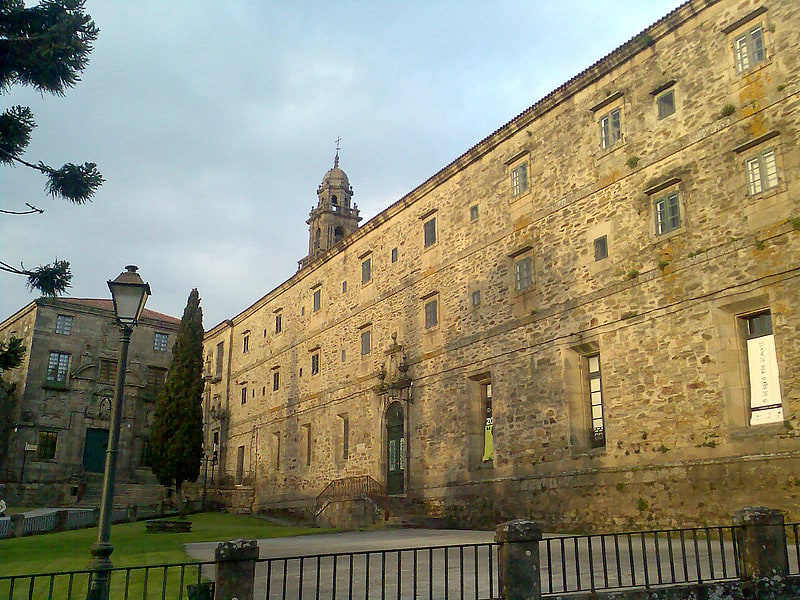
Also known as: Convento de Santo Domingo de Bonaval
Monastery in Santiago, Spain. The Convent of St Dominic is a former Dominican monastery in Santiago de Compostela, Galicia, Spain.
The complex includes architecture in various styles including work by the Galician Baroque architect Domingo de Andrade. It was declared a national monument in 1912.[7]
Address: Costa de San Domingos, 15703 Santiago de Compostela
Monte Pedroso
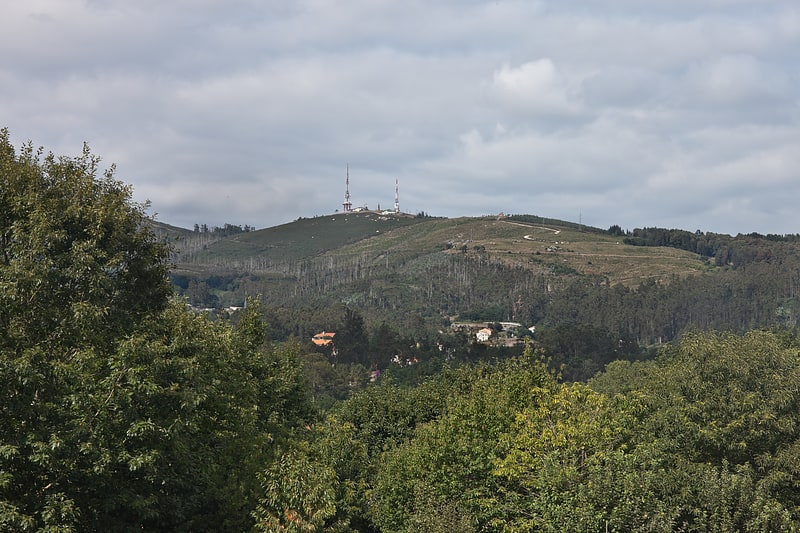
Summit in Spain. Monte Pedroso is a granite summit close to Santiago de Compostela, Spain.
Being the highest peak in the vicinity of Santiago it offers excellent views over the town. Close to the summit spiral-like engravings from Stone or Bronze Age have been found.[8]
Colexiata de Sar
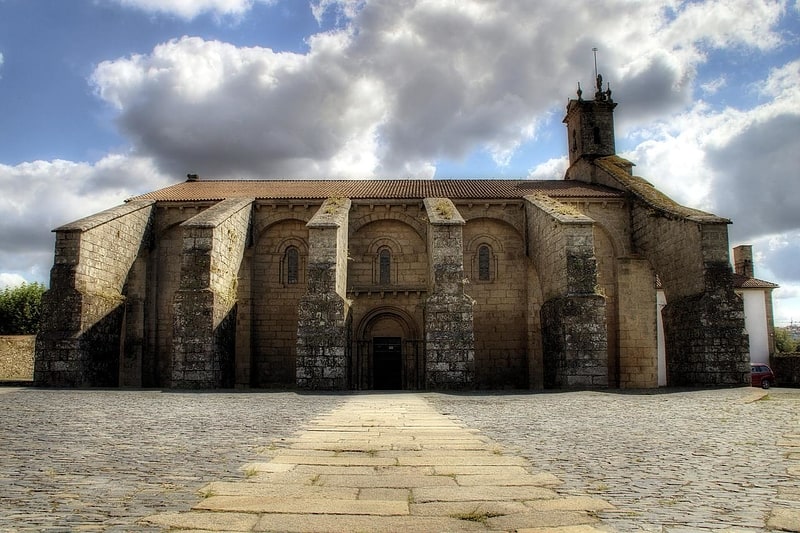
Also known as: Colegiata de Santa Maria del Sar
Catholic church in Santiago, Spain. The Church of Santa María a Real do Sar is a church located in Santiago de Compostela, Spain. It was declared Bien de Interés Cultural in 1895.The church lies on the banks of the Sar river, which flows past Santiago.[9]
Address: Rúa de Sar, 0, 15701 Santiago de Compostela
Castle da Rocha Forte
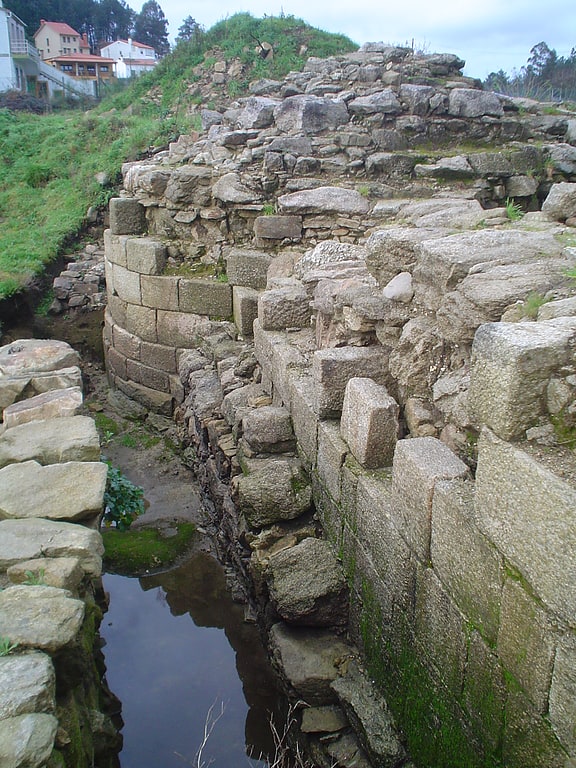
Also known as: Castillo de la Rocha Forte
Historical landmark in Spain. Castle da Rocha Forte is a ruined fort near Santiago de Compostela, in Galicia, Spain. It was first mentioned in written documents from 1253, but it had probably been built earlier.
The castle was situated in a strategic location by road from Padrón village to Santiago. Pilgrims followed that route from Portugal. The castle is not on top of a hill as many other forts are, but in a valley where it could control all of the traffic into town.
In addition to its purpose for defence, the castle was also a home for the Archbishop, which could provide the men of the local church a shelter from rioting citizens. In 1317, Berenguel de Landoira was nominated as Archbishop. The residents did not like him and started a rebellion. Archbishop Landoira had all the leaders of the rebellion executed. In the 15th century in Irmandiño wars the castle was damaged badly and it was abandoned. Later, in 1472 the walls were dismantled. During the Franco era the ruins were used as a hideout. In 1962, an electricity pylon was installed to the castle area.[10]
Address: Rua do Pineiro, 26, 15706, 15706 Santiago de Compostela
Capela de Ánimas
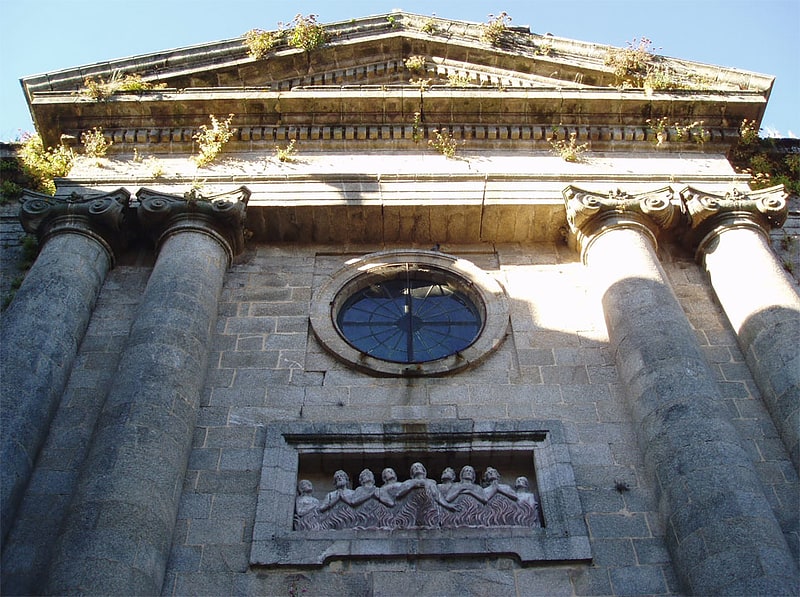
Also known as: Capilla de Ánimas
Catholic church in Santiago, Spain. Capela de Ánimas is a church in Santiago de Compostela, Province of A Coruña, Galicia, Spain. It was completed in 1788.[11]
Address: Rúa das Casas Reais, s/n, 15704 Santiago de Compostela
Monastery of San Paio de Antealtares
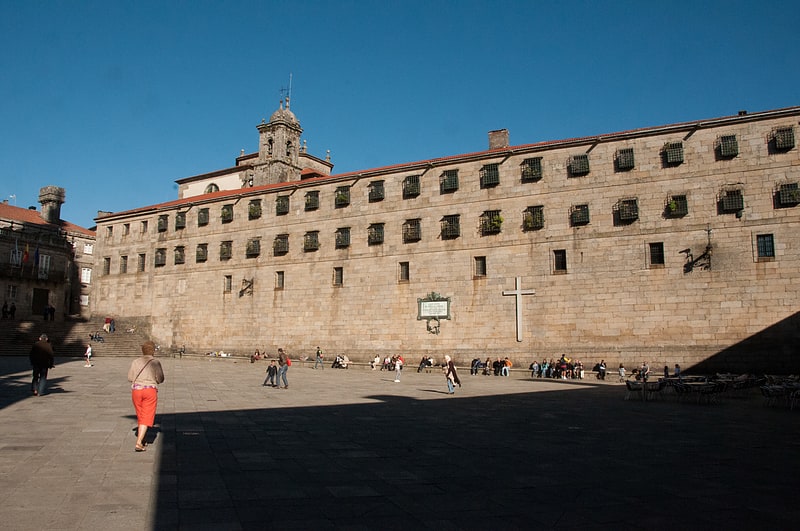
Also known as: Monasterio de San Pelayo de Antealtares
Monastery in Santiago, Spain. The Monastery of San Paio de Antealtares is a monastery in Santiago de Compostela, Galicia, Spain.
It was founded in the 11th century by Alfonso II of Asturias and conceived as a Benedictine monastery originally integrated by twelve monks. It was initially aimed to look after and render worship to the newly discovered tomb of the Apostle James, which brought a pilgrimage status to the city.
Once the Benedictine monks left the monastery in 1499, it was occupied by cloistered nuns and dedicated to Pelagius of Córdoba, a 10th-century Galician child captured, tortured and dismembered by order of the Caliph Abd-ar-Rahman III of al-Andalus after his refusal to renounce of his Christian faith.
The present-day construction can almost entirely be traced back to the 17th and 18th centuries.[12]
Portico of Glory
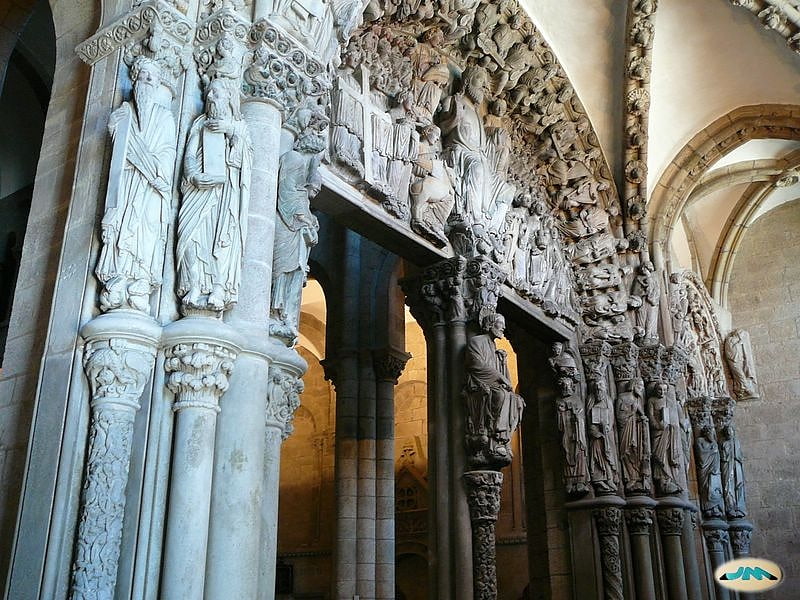
The Portico of Glory of Santiago de Compostela Cathedral is a Romanesque portico and the cathedral's main gate created by Master Mateo and his workshop, on the orders of King Ferdinand II of León. The king donated to Mateo one hundred maravedís annually between 1168 and 1188. To commemorate its completion in 1188, the date was carved on a stone set in the cathedral and on the lintel that supports the richly ornamental tympanum. Under the contract made in 1168, if Mateo was to renege on the deal to create the portico at any time, he would have to pay 1,000 gold pieces. The complete three-piece set took until 1211 to completely finish; when the cathedral was consecrated in the presence of King Alfonso IX of León.
Originally projected as a four-part division, it was modified into a three-part format, which changed the proportions of the entire portal. With over 200 Romanesque style sculptures, the portico is the artistic high-point of the cathedral and often considered the greatest work of Spanish Romanesque sculpture. The Pórtico de la Gloria consists of an inner double-arched porch and finished with an outer western façade. The lateral archivolts were left undecorated, which might have been due to time restraints to finish the gate for the Jubilee of 1182 and formal procession of pilgrims.
The pure Romanesque fabric was altered slightly and later encased with a Baroque facade. Before the facade was erected, the portico would be seen from afar and would take pilgrims up a large flight of stairs to approach it. Without door valves, the three large arches were decorated with angels and foliage and framed the ciborium and altar at the end of the nave. Prophets and apostles form the columns and jambs welcoming pilgrims inside the church.
Though the portal was originally poly-chromed, the numerous traces of the remaining paint seen today are due to later interventions. Records show that the portico was repainted often with contracts surviving from the fifteenth and seventeenth centuries. Two types of paintings are distinguishable now on the structure. On some of the figures, the paint is powdery; the colors are light, soft and clear without any additional ornaments. This dates back to the fifteenth or sixteenth century. The more enamel-like painting is harsher and darker with ornamental patterns dated back to the 17th century in a similar style to offering boxes in 1656.
Concealed now by the Churrigueresque west front, the porch or narthex is no longer viewable from the exterior. The church is responsible for the preservation of the portal to this day. The doors were never closed day or night in the Middle Ages.[13]
FinisTerrae
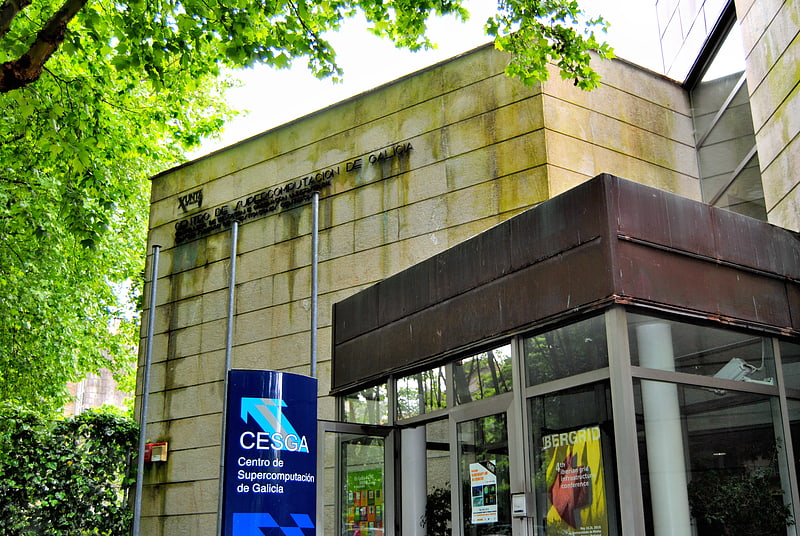
Finisterrae was the 100th supercomputer in Top500 ranking in November 2007. Running at 12.97 teraFLOPS, it would rank at position 258 on the list as of June 2008. It is also the third most powerful supercomputer in Spain. It is located in Galicia.
This project is promoted by the Xunta de Galicia (regional government of Galicia) and the Spanish National Research Council (CSIC). It was founded in 1993 to serve as a platform to foster scientific innovation and invest in Research and Development.
It is estimated that the base project will be completed in 2010. It is expected to reach the TOP10 of the most powerful supercomputers in the world when it reaches full capacity. The supercomputer is physically hosted at CESGA.[14]
As Duas Marias
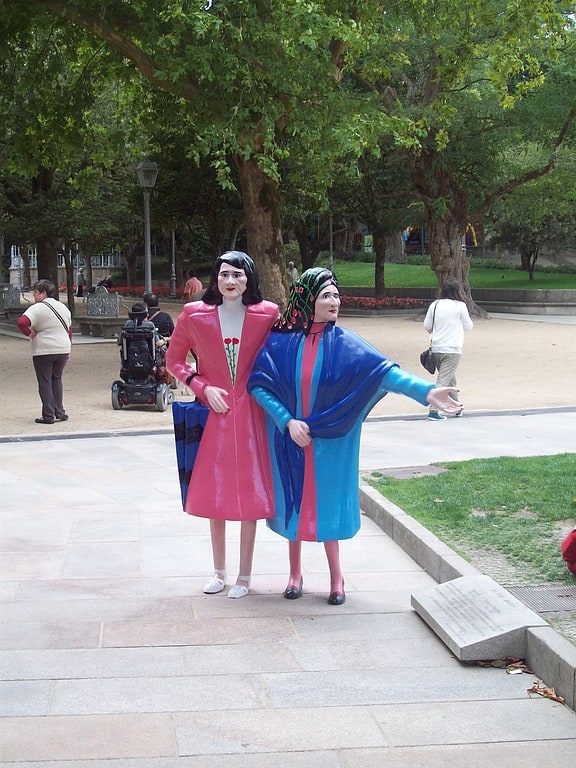
Las Marías, Las Dos Marías, Las Dos en Punto or Cara de Palo is the name given in Santiago de Compostela to the couple formed by the sisters Maruxa and Coralia Fandiño Ricart, represented since 1994 in a famous sculpture located in the Alameda Park, in Santiago.
The two sisters became popular characters in the city because they took a daily stroll through the Zona Vella (old town of Compostela), during the fifties and sixties, dressed and made up in eccentric clothes, while flirting with young university students.This walk, which took place at two o'clock in the afternoon (hence one of their nicknames), the time when most students went to lunch and, therefore, when there was more activity in the streets of downtown Santiago, was quite an event because of the contrast with the atmosphere that reigned in Spain during Franco's dictatorship.
Coralia, the youngest and tallest, was shy and not very talkative, while Maruxa, smaller but older, was the one who was in charge. Nicknamed the Marías, they were also described as "crazy" and "spinsters". What is known as one of the most representative icons of the city of Santiago de Compostela, is due to a process of social and institutional mistreatment, protected by the regime of the dictator Francisco Franco.
Castriño de Conxo
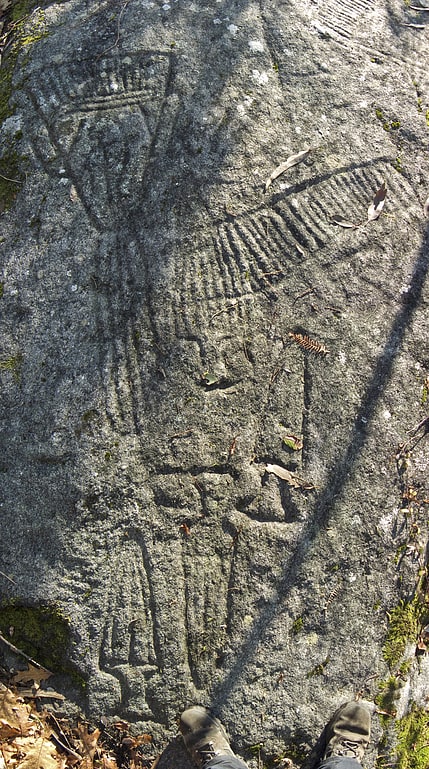
Tourist attraction in Spain. Castriño de Conxo is a ruined site in Province of A Coruña, Galicia, Spain.[15]
Colexio de San Xerome
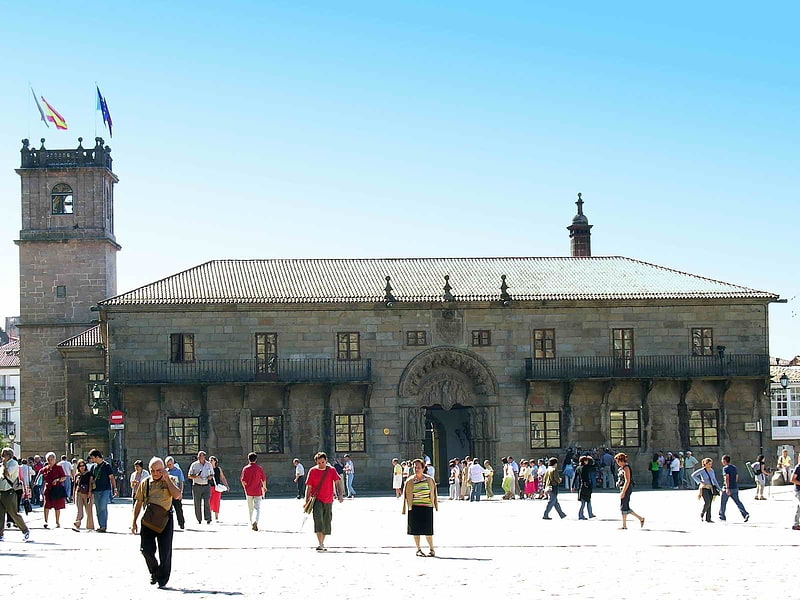
Also known as: Colegio de San Jerónimo
Colexio de San Xerome is a college in Santiago de Compostela, Province of A Coruña, Galicia, Spain. Founded in 1501, it is located on the Praza do Obradoiro.[16]
Address: Praza de Obradoiro, 15705 Santiago de Compostela
Praza do Obradoiro
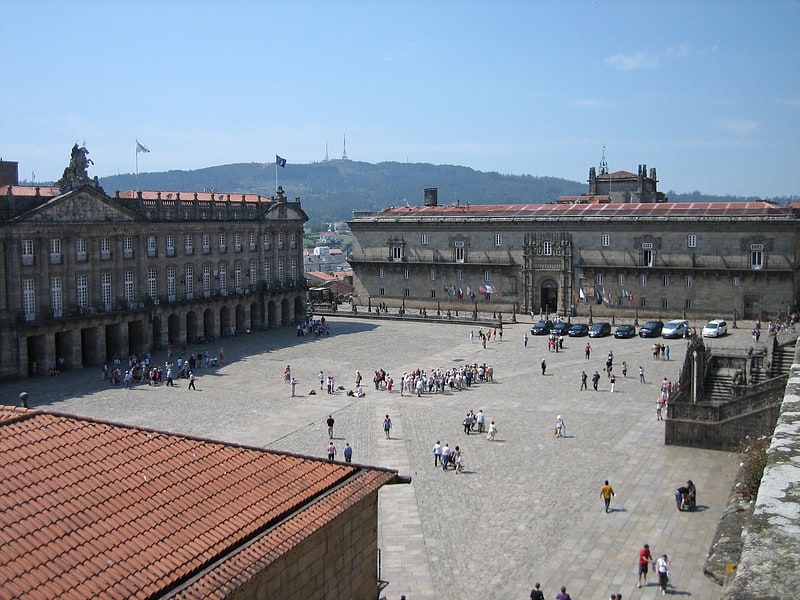
Also known as: Plaza del Obradoiro
The Praza do Obradoiro is main square of the Santiago de Compostela old town, although not placed at the real centre. It lies to the West of the main façade of the Santiago de Compostela cathedral, and thus the Pórtico da Gloria must be crossed to get into the building from the square. It is surrounded by four important buildings, said to represent the four powers of the city: the aforementioned Santiago de Compostela cathedral to the East, Hostal dos Reis Católicos to the North, Pazo de Raxoi to the West and the Colexio de San Xerome to the South. Once being crossed by cars, now is mainly pedestrian as the rest of the old town, with only traffic for taxis and loading delivery lorries.
The floor is decorated by eight rays starting from the center, where a plaque commemorates the World Heritage Site pilgrims' way of Camiño de Santiago, whose final target is around here.[17]
Address: Praza do Obradoiro, Santiago de Compostela
Casa do Cabido
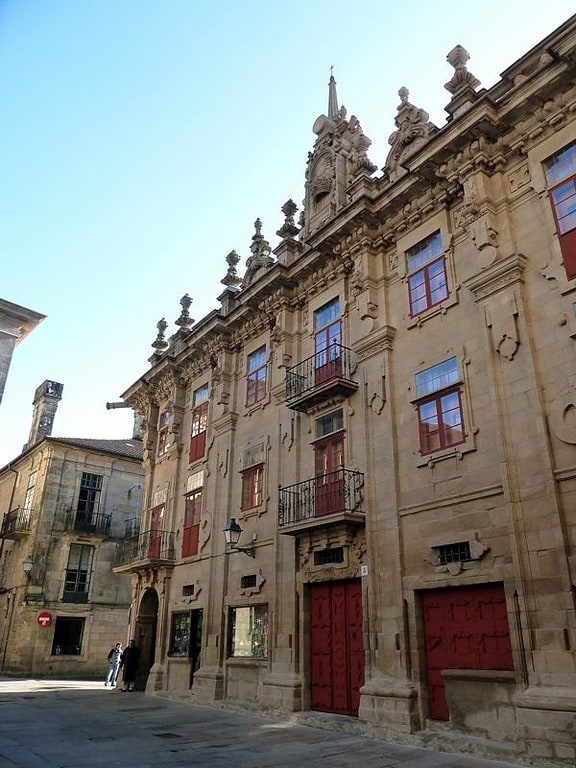
Also known as: Casa del Cabildo
Restaurant in Santiago, Spain. Casa do Cabido is a historic house in Santiago de Compostela, Province of A Coruña, Galicia, Spain, facing the Praza de Praterías. It was designed for urban beautification in order to decorate and match the surroundings and completed in 1758 in the baroque style.[18]
Address: Plaza de las Platerias 2, 15782 Santiago de Compostela
Galicia Contemporary Art Center
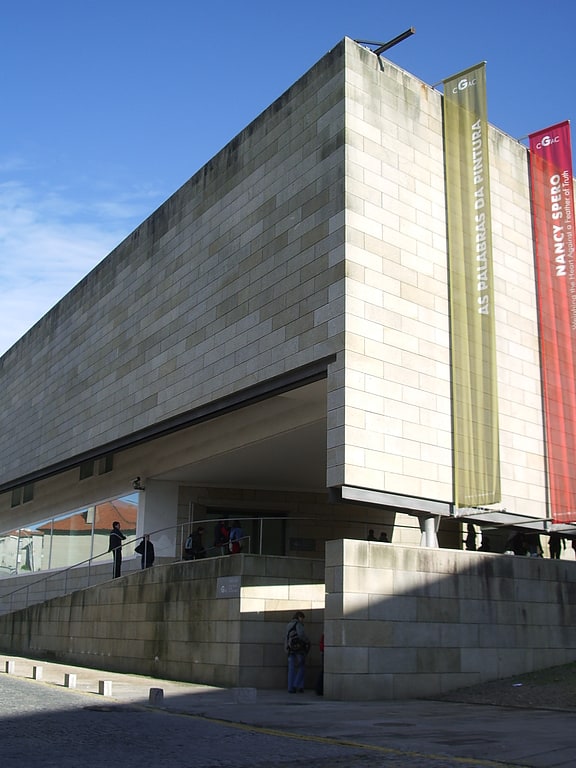
The Galician Center of Contemporary Art is a center based in Santiago de Compostela that aims to promote culture in Galicia through the exhibition, enjoyment and knowledge of trends and currents of contemporary artistic creation.